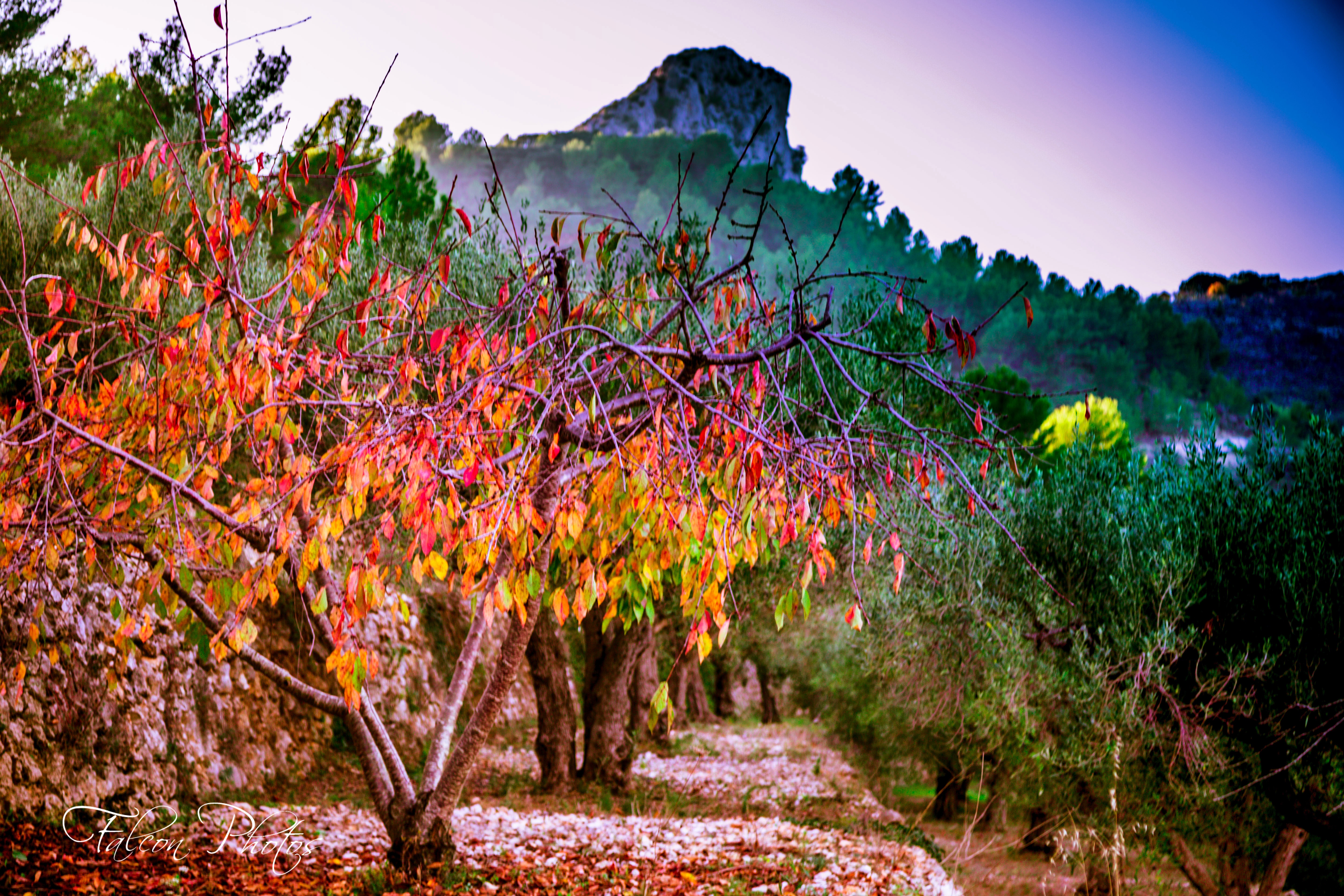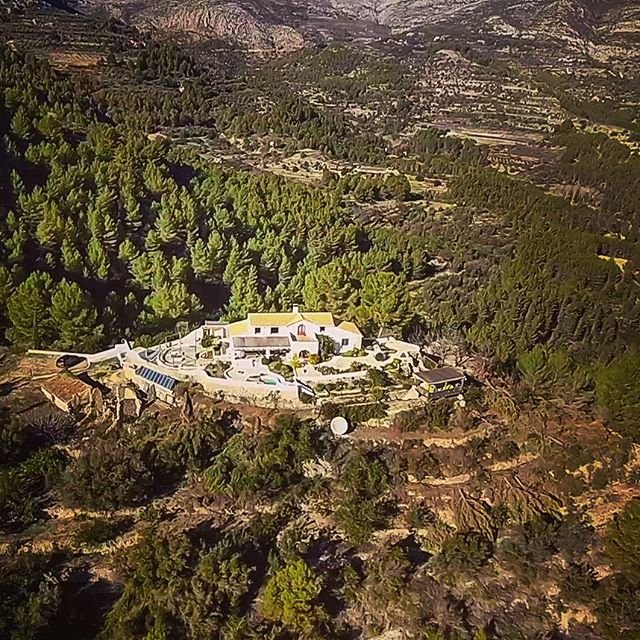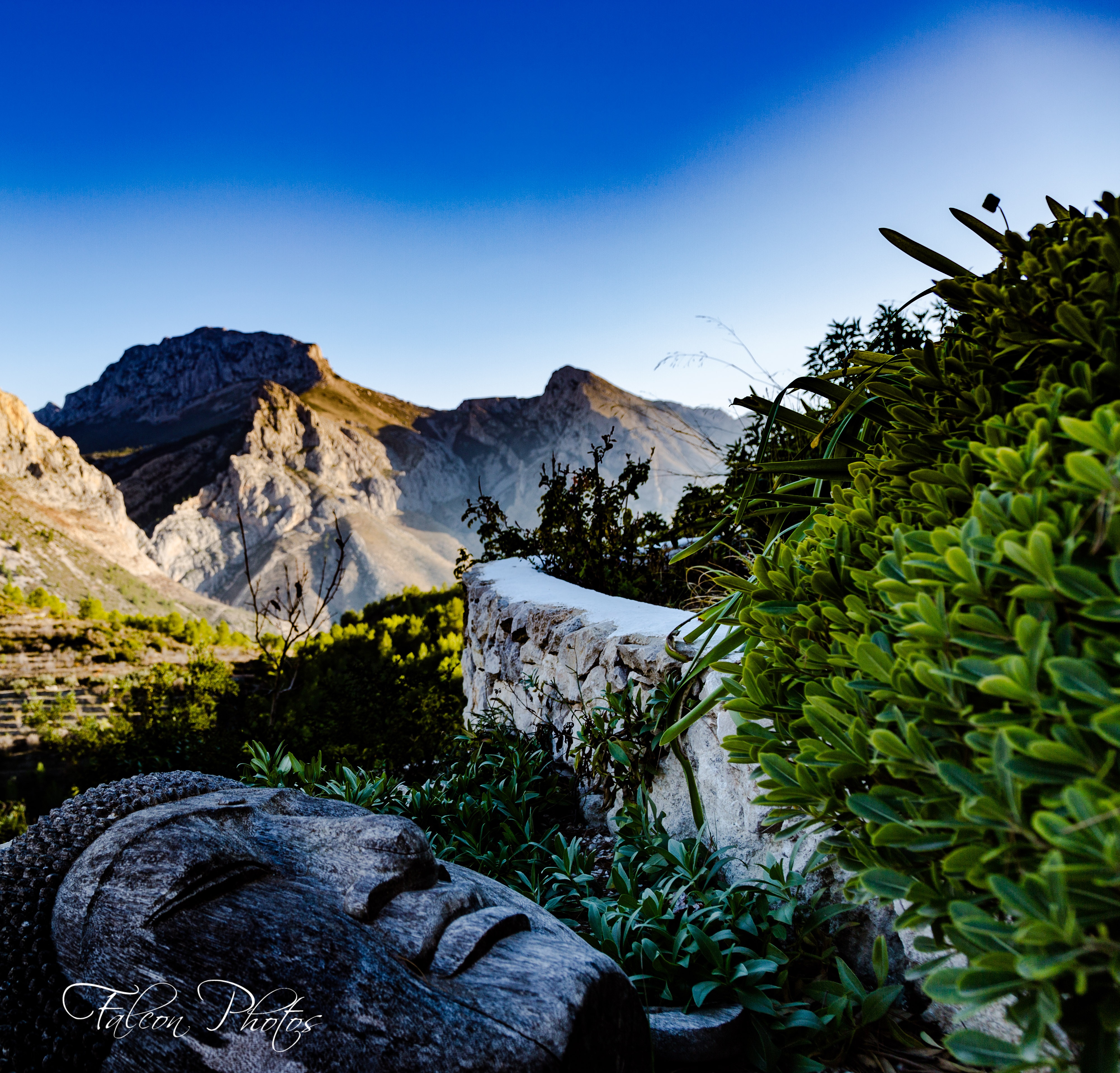
(Photo of one of the olive tree terraces in our garden. You can see the wide terrace down the middle, with a stone wall on the left facing the next terrace up and the ground dropping away on the right down to the next terrace)
As the crow flies, we don’t live too far away from Benidorm, a town more usually recognised for sun, sea and sangria as opposed to culture (In fact, the Benidorm Cultural Centre is a derelict building which kind of says it all really!) However, come a little bit inland, beyond the narrow strip of high rises crowding the beach, and you will find a completely different landscape of small villages, winding roads and terraced mountains.
Quite literally, every hillside that you look at has well built, stone faced terracing (as in the photo) allowing the land to be easily worked. Nowadays, the crops are mainly orange, lemon and almond trees but in the past included a much wider range of foods. Dominating the landscape, these terraces have been there a very long time with some of them dating back to the second milenia B.C making them 4000 years old.
And when I say they dominate the landscape, I mean that everywhere you look, terraces have been carved out of the mountains with the majority of them stone faced. Generations of peasants have worked to keep these terraces alive and, considering how much land has been turned into terraces, the building project is a feat akin to some of the world’s greatest monuments such as the pyramids.
However, during the 20th Century (particularly since the 1970s) these bench terraces have been abandoned, as a result of a change in farming practices, causing the terraces to deteriorate. Now, it is common to see the stone facing falling down and simply left to lay where it falls. When the terraces aren’t worked, shrubs can begin to grow which increases the risk of forest fires, a major issue in a dry area where you need a licence to even have a fire in the first place.
Terrace fields were built to favour infiltration and reduce soil erosion, but they require constant work for their conservation. When they are abandoned, the drainage systems loses its functionality, favouring soil saturation and natural processes which reconstruct the original profile of the slope.
Unfortunately, these terraced fields do not fit so well with modern farming methods and so it really seems that the landscape will simply return to its natural, more wild state. Whether you think that is a good thing or not, it will certainly change the landscape of the Valencia region.

(The house which is, itself, surrounded by terraces)

(Look just above the mask on the left of the photo and you can see terraces climbing the mountainside to quite an altitude)
Beautiful place and that view is gorgeous.
Downvoting a post can decrease pending rewards and make it less visible. Common reasons:
Submit
Yes, we are very lucky to be able to see that every morning :-)
Downvoting a post can decrease pending rewards and make it less visible. Common reasons:
Submit